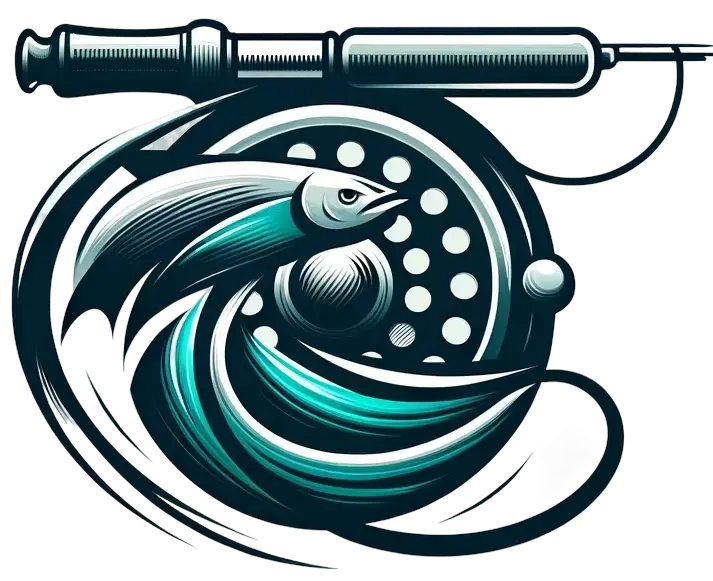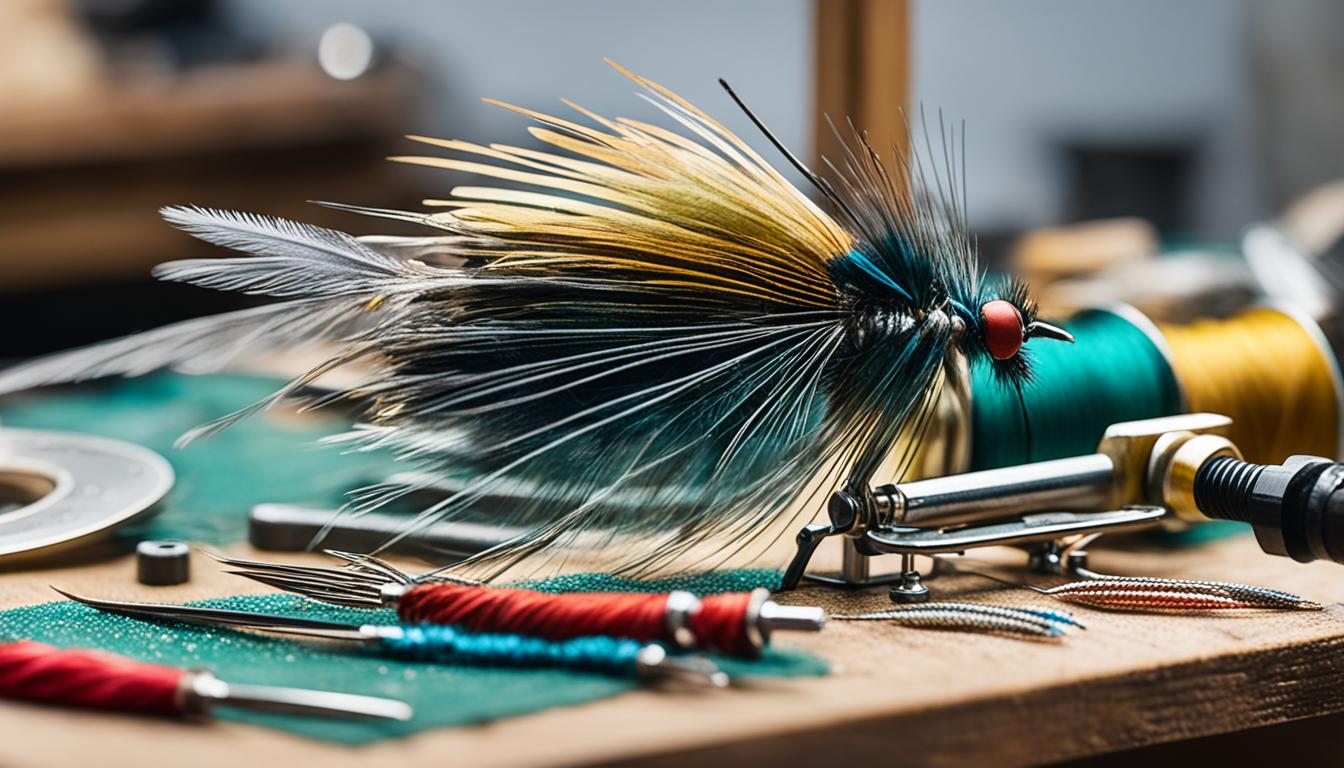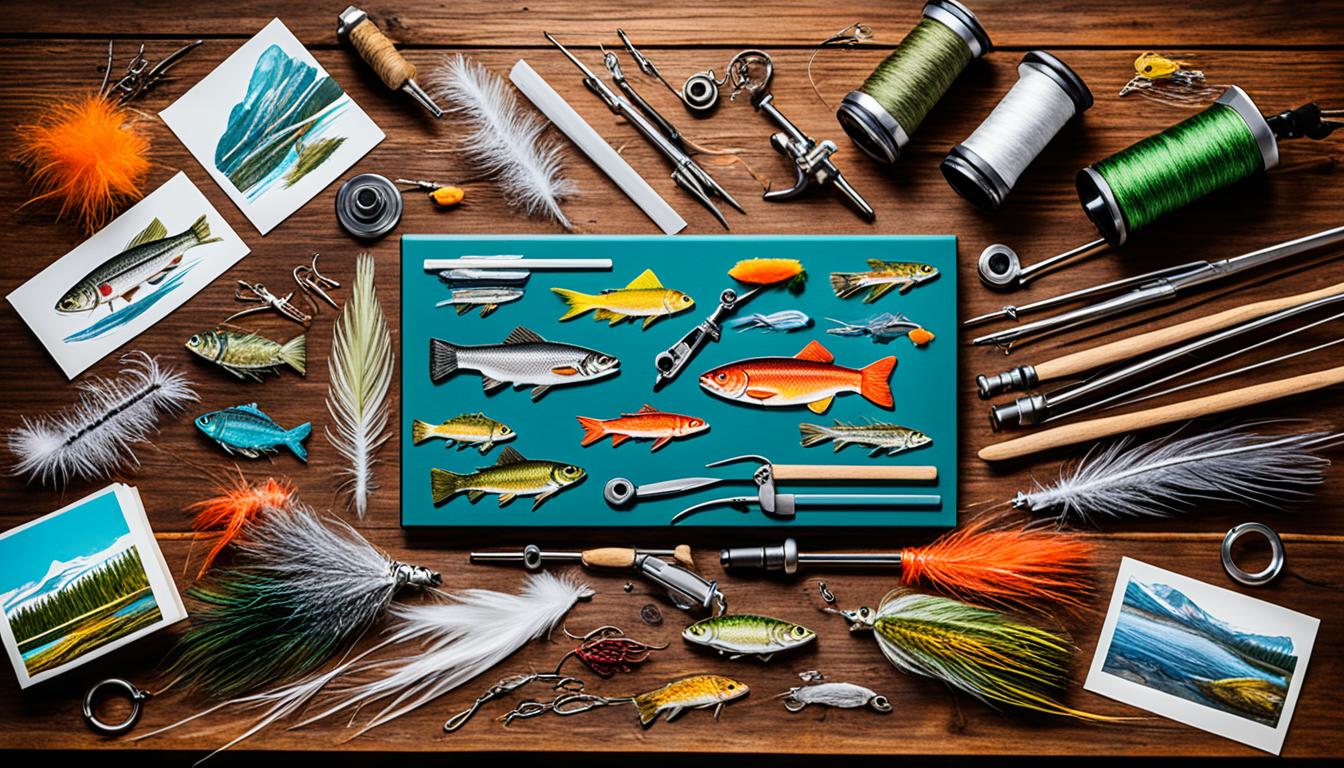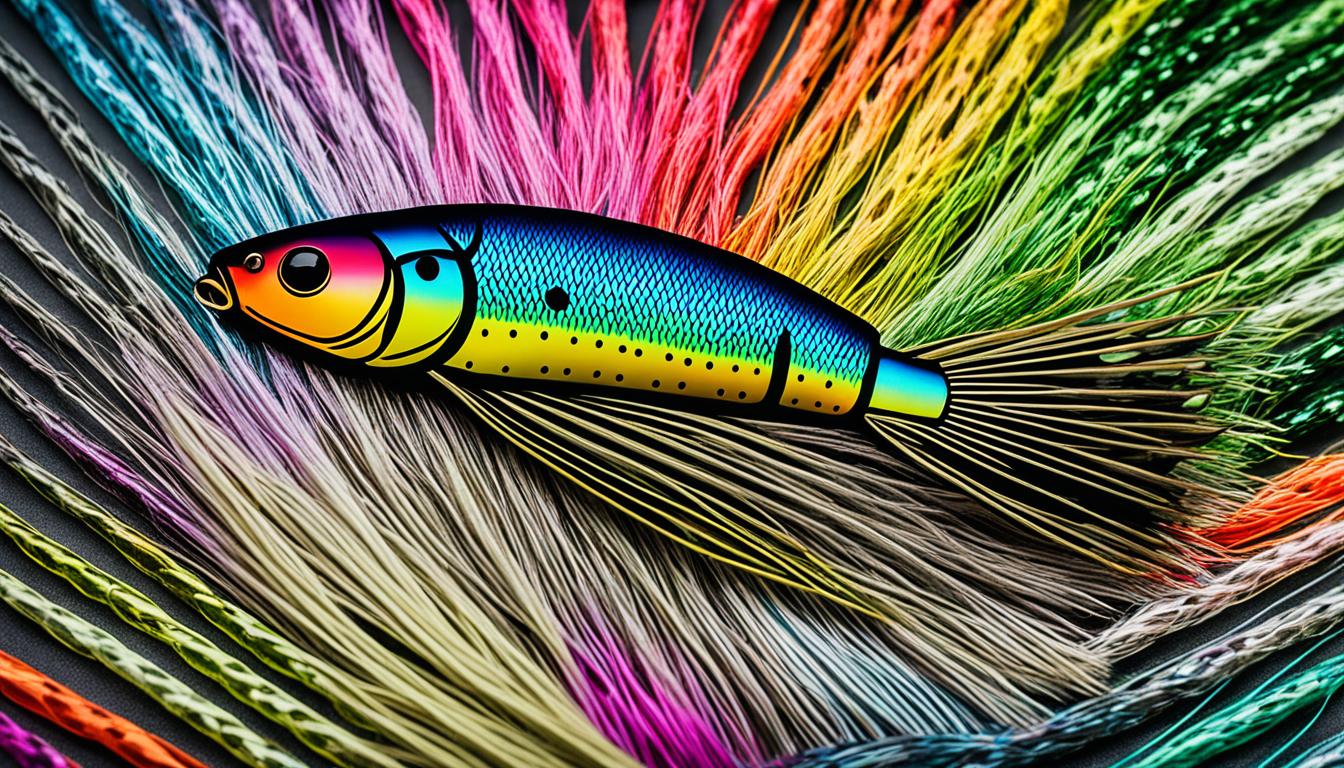Welcome to our guide on the art of dry fly tying! Whether you’re a seasoned fly fisherman or just starting out, mastering the skill of tying your own flies is an essential part of the fly fishing experience. In this article, we’ll delve into the world of fly tying, covering everything from basic techniques to popular dry fly patterns. Join us as we explore the intricacies of this art form and discover how it can enhance your fly fishing adventures.
Key Takeaways:
- Learn the art of dry fly tying to enhance your fly fishing experience.
- Explore a wide range of fly tying materials and techniques.
- Discover popular and effective dry fly patterns.
- Improve your fly tying skills with valuable tips and techniques.
- Get insights into fly fishing knots and gear.
Materials and Techniques for Fly Tying
In “Mastering the Art of Fly Tying,” we delve into the wide range of fly tying materials and techniques essential for every aspiring fly tier. Whether you are a beginner or a seasoned fly fisherman, this section will provide valuable insights to elevate your fly tying game.
Exploring Fly Tying Materials
Our book goes beyond the basics and introduces you to a comprehensive array of fly tying materials, including some lesser-known options. We believe in giving you the knowledge and tools to unleash your creativity and create unique and effective flies. From feathers and furs to threads and wires, here’s a glimpse into the diverse materials covered in this section:
- High-quality feathers in various colors, textures, and patterns
- Various animal furs, both natural and synthetic
- Different types of threads and wires for secure and durable fly tying
- Specialty materials like flash material and foam, adding flair to your flies
Mastering Fly Tying Techniques
Tying an effective fly requires more than just assembling materials. Our book provides detailed descriptions of essential fly tying techniques, accompanied by helpful black and white illustrations. You’ll learn how to create realistic bodies, handle delicate hackle, and work with intricately tied knots. Some of the techniques covered include:
- Thread control for neat wraps and secure fly construction
- Proper feather and fur application for lifelike flies
- Hackle manipulation to achieve desired fly buoyancy and movement
- Creating segmented bodies and realistic wing cases
With step-by-step instructions and illustrative visuals, we empower you to master these techniques and enhance your fly tying skills.
In the next section, we dive into the essential dry fly patterns that every fly fisherman should have in their arsenal. From classic patterns to modern variations, we’ll explore a wide range of dry flies designed to entice finicky trout to rise to the surface.
Essential Dry Fly Patterns
We are excited to present a variety of essential dry fly patterns featured in the book “Mastering the Art of Fly Tying.” These patterns focus on traditional and conventional styles that have proven to be effective in fly fishing. Each dry fly pattern in the book is accompanied by valuable information about its history, purpose, and how it can be best utilized during fishing excursions.
While the book’s tying instructions for the dry fly patterns are presented in a wordy manner, with more emphasis on text than pictures, they offer a wealth of knowledge and guidance for fly fishermen. The step-by-step instructions provide detailed insights into the tying process, ensuring that even beginners can follow along and successfully create these effective dry fly patterns.
“The tying instructions for the dry fly patterns offer a wealth of knowledge and guidance.”
Here is a glimpse of some of the dry fly patterns featured in the book:
| Fly Pattern | Common Name | Hook Size | Category |
|---|---|---|---|
| 1 | Adams | 14-18 | Mayfly |
| 2 | Elk Hair Caddis | 12-16 | Caddisfly |
| 3 | Blue Winged Olive | 18-22 | Mayfly |
| 4 | Royal Wulff | 12-16 | Attractor |
| 5 | Parachute Adams | 14-18 | Mayfly |
These are just a few examples of the dry fly patterns you can expect to find in the book. Each pattern offers its own unique characteristics and is designed to imitate specific insects on the water’s surface. By incorporating these effective dry fly patterns into your fly fishing arsenal, you increase your chances of enticing fish to rise and strike.
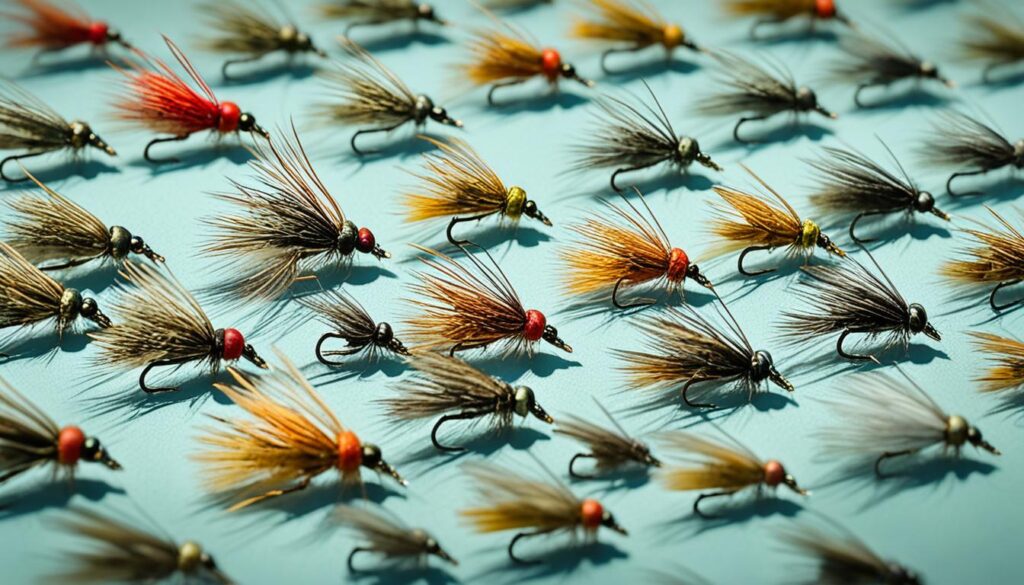
Fly Tying Tips and Techniques
In “Mastering the Art of Fly Tying,” we provide valuable tips and techniques to help you enhance your fly tying skills. Whether you’re a beginner or an experienced fly tyer, these insights can help you create high-quality flies that will improve your fishing success.
Selecting the Right Materials
Choosing the right materials is essential for creating effective flies. Here are some tips to consider:
- Quality Matters: Opt for high-quality materials that are durable and mimic the natural look and movement of insects.
- Match the Hatch: Research the insects present in the water you plan to fish and choose materials that closely resemble them.
- Experiment: Don’t be afraid to try new materials and combinations to create unique and effective patterns.
Achieving Precise Finishes
Finishing your flies with precision adds the perfect touch to their overall appeal. Here’s how you can achieve precise finishes:
- Trimming and Shaping: Use sharp scissors to trim excess materials and shape your flies to the desired form.
- Applying Head Cement: Apply head cement in thin layers to ensure a smooth and durable finish.
- Whip Finishing: Master the whip finishing technique to secure the thread and complete your fly with a clean and professional knot.
Enhancing Durability
Creating flies that can withstand the rigors of fishing is crucial for increasing their lifespan. Here are some tips to enhance the durability of your flies:
- Secure Wraps: Make tight and secure wraps when attaching materials to ensure they stay in place during casting and retrieving.
- Adding Adhesive: Apply a drop of adhesive on critical areas, such as the head and thread wraps, to provide extra strength.
- Reinforcing Weak Points: Identify the weak areas of your flies, such as hackle tips, and reinforce them with additional wraps or adhesive.
By applying these fly tying tips and techniques, you’ll be able to create flies that are not only visually appealing but also durable and effective on the water. With practice and experimentation, you’ll discover your own unique style and become a master fly tyer.
“The true art of fly tying lies in the attention to detail and the mastery of techniques. By honing your skills and following these tips, you will elevate your fly tying to new heights.” – Master Fly Tyer
Fly Fishing Knots and Gear
While “Mastering the Art of Fly Tying” primarily focuses on the art of fly tying, it also includes valuable information on fly fishing knots and gear. Although not as comprehensive as dedicated books solely devoted to these topics, beginners can still benefit from the basic knowledge provided in this book. Understanding fly fishing knots and having the right gear are essential components of a successful fly fishing experience.
“Fly fishing knots and gear are critical aspects of the overall fly fishing experience. Having a solid understanding of different knots and using appropriate gear can significantly impact your success on the water.”
In the book, you’ll find a concise overview of essential fly fishing knots, including the clinch knot, improved clinch knot, and double surgeon’s knot, among others. Each knot is explained with clear instructions, making it easier for beginners to grasp and practice. Illustrations are provided to ensure proper visual comprehension as well.
When it comes to fly fishing gear, the book highlights the importance of using high-quality equipment. It emphasizes that having the right gear not only enhances your fishing experience but also increases the chances of success on the water. From fly rods and reels to lines, leaders, and tippets, the book covers the essential gear required for fly fishing.
As the book focuses primarily on fly tying, the information on fly fishing knots and gear serves as a valuable introduction for beginners. For more detailed and in-depth knowledge, it is recommended to explore dedicated resources specifically tailored to these subjects.
Recommended Knots for Fly Fishing
| Knot | Usage |
|---|---|
| Clinch Knot | Securing the fly to the tippet |
| Improved Clinch Knot | A stronger variation of the clinch knot |
| Double Surgeon’s Knot | Joining different sections of line together |
| Perfection Loop | Creating loops on the leader to attach the fly |
While these knots provide a good starting point, there are numerous other knots that avid fly fishermen use in various situations. Exploring a dedicated book or online resources on fly fishing knots can help you expand your knowledge and skills.
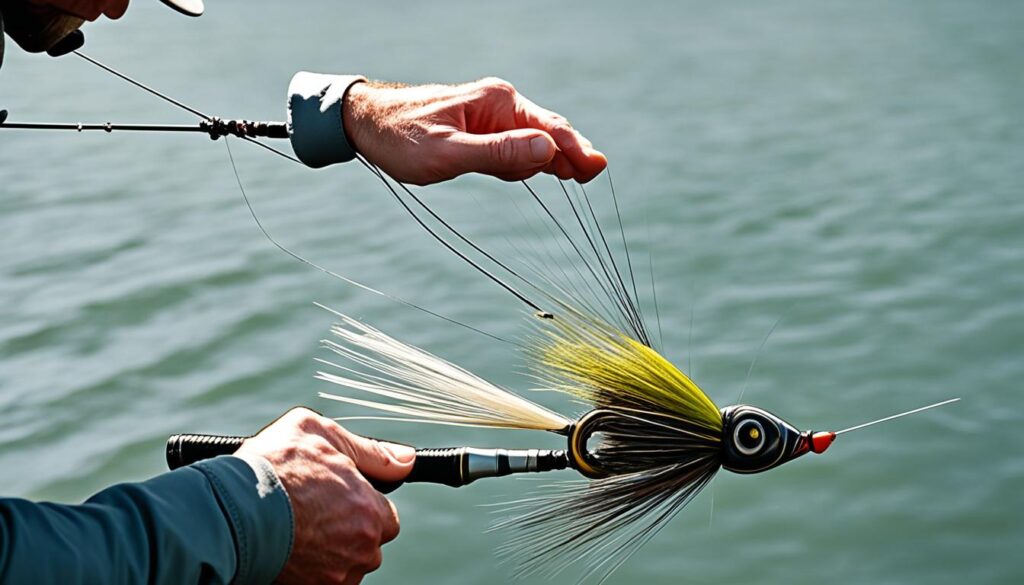
Remember, mastering fly fishing knots and having the right gear go hand in hand with developing your fly tying abilities. These elements work together to create a seamless and enjoyable fly fishing experience.
Step-by-Step Fly Tying Instructions
The book “Mastering the Art of Fly Tying” provides step-by-step instructions for tying various types of flies, offering a valuable resource for both beginners and experienced fly tiers. Whether you’re looking to create dry flies, wet flies, or streamers, this book has you covered.
Each tying step is described in detail, allowing you to follow along and recreate the fly with precision. From selecting the right materials to achieving the perfect finish, the instructions cover all the essential aspects of fly tying.
However, it is important to note that there are some minor flaws in the presentation of the step-by-step photos. Some of the flies may appear poorly tied, and occasionally the captions might not align perfectly with the images. While this can be disappointing, it doesn’t diminish the value of the overall instructions.
“The step-by-step instructions in ‘Mastering the Art of Fly Tying’ are a great resource for anyone looking to improve their fly tying skills. Despite the occasional flaws in the photos, the detailed descriptions make it easy to follow along and create beautiful flies.” – Fly Tying Enthusiast
By following the step-by-step instructions in this book, you’ll be able to learn and master the art of fly tying at your own pace. Whether you’re a passionate fly fisherman or simply want to explore a new hobby, these instructions will help you create flies that are not only visually appealing but also effective on the water.
Stay tuned for the next section, where we’ll explore the essential dry fly patterns featured in “Mastering the Art of Fly Tying.”
Conclusion
After thoroughly exploring “Mastering the Art of Fly Tying”, we conclude that despite its flaws, this book is a valuable resource for fly fishermen seeking to enhance their dry fly tying skills.
The book offers a comprehensive introduction to materials, techniques, and patterns, with an emphasis on traditional and conventional styles. It covers a wide range of fly tying materials, including some that are not commonly discussed in other fly tying books. The detailed descriptions of techniques, accompanied by helpful black and white illustrations, make it suitable for both beginners and experienced fly tiers.
Although the step-by-step photos showing tied flies have some quality issues, the book compensates by providing valuable information, guidance, and tips for fly tying. Despite the textual emphasis, the book offers a good selection of effective dry fly patterns that can prove beneficial for fly fishing.
In conclusion, while “Mastering the Art of Fly Tying” may have its shortcomings, it still remains a valuable resource that can help fly tiers improve their skills and enjoy a more fulfilling fly fishing experience.
FAQ
What does “Mastering The Art of Dry Fly Tying” cover?
The book offers a comprehensive guide to learning the art of tying flies, covering various types of flies including dry flies, large streamers, and wet flies.
What does the book cover in terms of materials and techniques?
The book provides a thorough introduction to materials and techniques needed for fly tying, including some that are not commonly discussed in other fly tying books.
What kind of dry fly patterns are included in the book?
The book includes a variety of dry fly patterns, with an emphasis on traditional and conventional styles.
What tips and techniques does the book offer for fly tying?
The book provides valuable tips and techniques for fly tying, including advice on selecting the right materials, achieving precise finishes, and enhancing durability.
Does the book cover fly fishing knots and gear?
Yes, although not as in-depth as dedicated books on these topics, it provides beginners with some basic knowledge that can be helpful for their fly fishing endeavors.
Does the book offer step-by-step instructions for tying flies?
Yes, the book offers step-by-step instructions for tying various types of flies, including detailed descriptions of each tying step.
Is “Mastering the Art of Dry Fly Tying” a valuable resource?
Despite its flaws, the book is a valuable resource for fly fishermen looking to enhance their dry fly tying skills and enjoy a more fulfilling fly fishing experience.
